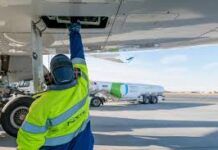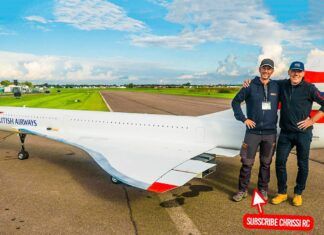
AVweb’s General Aviation Accident Bulletin is taken from the pages of our sister publication, Aviation Safety magazine and is published twice a month. All the reports listed here are preliminary and include only initial factual findings about crashes. You can learn more about the final probable cause in the NTSB’s web site at www.ntsb.gov. Final reports appear about a year after the accident, although some take longer. Find out more about Aviation Safety at www.aviationsafetymagazine.com.
October 1, 2017, Klamath Falls, Ore.
Cirrus Design SR22
At about 1043 Pacific time, the airplane was destroyed when it impacted terrain while maneuvering in a remote mountainous area. The private pilot and the passenger received fatal injuries. Instrument conditions were reported in the area at the time of the accident.
Before departure, a retired U.S. Air Force F-15 pilot queried the accident pilot about the weather. The pilot replied he would climb above the clouds if needed and look for a hole to get down through. If he could not find a hole, then he would return to the departure airport. A state trooper conducting fish and wildlife surveillance reported hearing the airplane pass overhead on a westerly heading “at a very low altitude, in the clouds.” He stated “the engine was screaming” and that clouds were at tree-top level. The airplane started a left turn, followed shortly by the sound of a crash.
October 2, 2017, Tonopah, Nev.
Cessna 172S Skyhawk SP
The airplane was substantially damaged at about 1230 Pacific time when it impacted a dry river bed. The solo private pilot was not injured. Visual conditions prevailed.

The pilot topped off the accident airplane with about 52 gallons of fuel, then departed for an airport 306 nm away, flying at approximately 1000 feet agl. The flight was proceeding normally until the engine lost power and would not exceed 1500 rpm. He configured the airplane for a precautionary landing and landed into the wind. As the nose gear settled down, the airplane stopped abruptly, nosed over and came to rest inverted.
October 2, 2017, San Juan, P.R.
Cessna 182D Skylane
The airplane was substantially damaged at about 1048 Atlantic time when it collided with terrain during landing. The private pilot was fatally injured; a pilot-rated passenger was seriously injured. Visual conditions prevailed.
The pilot was cleared to land on Runway 9, behind a flight of two Blackhawk helicopters, shortly after they had cleared the runway at midfield. The airplane touched down just past midfield, bounced and came to rest in the grass infield, inverted.
October 3, 2017, Virginia Beach, Va.
SE5A Experimental
At about 0830 Eastern time, the aircraft was substantially damaged during a forced landing after a partial loss of power during initial climb. The solo airline transport pilot sustained minor injuries. Visual conditions prevailed for the test flight. The accident airplane’s assembly recently had been completed; the accident flight was its first.
The airplane was started, taxied and fast-taxied (with the tail up) the previous day. The accident flight began after normal taxi and run-up operations. According to the pilot, the engine ran “perfectly” as the aircraft accelerated and became airborne. At about 200-300 feet agl and more than of the way down the runway, the engine began losing power. After turning back toward the airport, the pilot realized he did not have sufficient power to reach it and headed for a recently harvested corn field instead. The approach and touchdown were normal, but the airplane’s landing gear was damaged by corn stalks and failed. The airplane nosed over and came to a stop. The engine had accrued about six total hours of operation since major overhaul.
October 3, 2017, Blythe, Calif.
Cirrus Design SR22
The airplane sustained substantial damage at about 1521 Pacific time during an emergency landing after a reported loss of engine power. The flight instructor and commercial pilot sustained minor injuries. Visual conditions prevailed.
After an uneventful takeoff, the two climbed and leveled off at a cruise altitude of about 11,500 feet msl on a flight to deliver the airplane to its new owner. About 1.5 hours into the flight, engine oil pressure started to decrease, and they decided to divert. Shortly thereafter, the engine completely lost power. The two pilots elected to activate the airplane’s parachute system.
October 4, 2017, Salters, S.C.
Cessna 401B
At about 1745 Eastern time, the airplane was destroyed when it impacted terrain while maneuvering. The commercial pilot and the passenger were fatally injured. Visual conditions prevailed.
A witness watched the airplane take off and, about 10 minutes later, the pilot made a low pass over the grass strip and then began a steep climb. The witness stated the airplane rolled left and the left wing dropped. The airplane became inverted and descended in a nose-low attitude. The airplane’s wings were level before it disappeared behind trees. It came to rest in an open field surrounded by trees about a mile southwest of the departure airport.
October 5, 2017, Hillsboro, Ore.
Piper PA-24-250 Comanche 250
The airplane sustained substantial damage at about 1420 Pacific time during a hard landing. The flight instructor and student pilot sustained serious injuries. Visual conditions prevailed.
During a practice short-field, full-stop landing, the airplane was slow and the instructor called for a go-around just before the student flared. During the go-around, the airplane stalled and struck the runway hard, substantially damaging the fuselage and wings.
October 5, 2017 Santa Ynez, Calif.
Glasair Super II RG Experimental
At 1053 Pacific time, the airplane made a forced landing to a grassy field following a loss of engine power. The pilot/owner was not injured but the airplane was substantially damaged on rollout when it impacted a perimeter fence and a dirt berm. Visual conditions prevailed.
Preflight, taxi and run-up were normal and there were no problems with the first full-stop takeoff and landing. Shorty after the second takeoff, the engine stopped producing power. The pilot initiated a left turn to enter the pattern, but he had to make a forced landing in an open field. During the landing, the airplane collided with a perimeter fence. Examination confirmed fuel was present in the tanks.
October 6, 2017, Sugar Grove, Ill.
Piper PA-34-220T Seneca III/IV/V
The airplane sustained substantial damage during a forced landing to a corn field at about 0706 Central time, following a loss of engine power on its right engine shortly after takeoff. The pilot and passenger were not injured. Instrument conditions prevailed; an IFR flight plan had been filed. The flight was originating, with Wichita, Kan., as the intended destination. The airplane received substantial damage to its fuselage and both wings.
October 6, 2017, Sweetwater, Texas
Bellanca 17-30A Super Viking
At 1329 Central time, the airplane experienced a total loss of electrical power. About 18 minutes later, the engine lost all power during cruise flight. The pilot performed a forced landing to a field, but the airplane received substantial damage on impact with terrain. Visual conditions prevailed.
October 6, 2017, Centre Hall, Penn.
Ercoupe 415-C
The airplane experienced a partial loss of engine power after takeoff at about 1415 Eastern time and was substantially damaged during the subsequent forced landing. The solo private pilot was not injured. Visual conditions prevailed.
After takeoff, the airplane had climbed to 200 feet agl when it experienced an “appreciable” loss of engine power, the flight controls became “sluggish” and the airplane would no longer climb, according to the pilot. The pilot performed a forced landing to a field directly off the departure end of the runway. During the landing roll, the airplane struck fences, resulting in substantial damage to both wings.
Examination revealed the left, right and fuselage fuel tanks were intact and contained fuel. The engine was rotated by hand and compression was confirmed on all but the No. 2 cylinder. The No. 2 exhaust valve was stuck in the open position without rocker-arm contact through several rotations of the crankshaft.
This article originally appeared in the January 2018 issue of Aviation Safety magazine.
For more great content like this, subscribe to Aviation Safety!

































